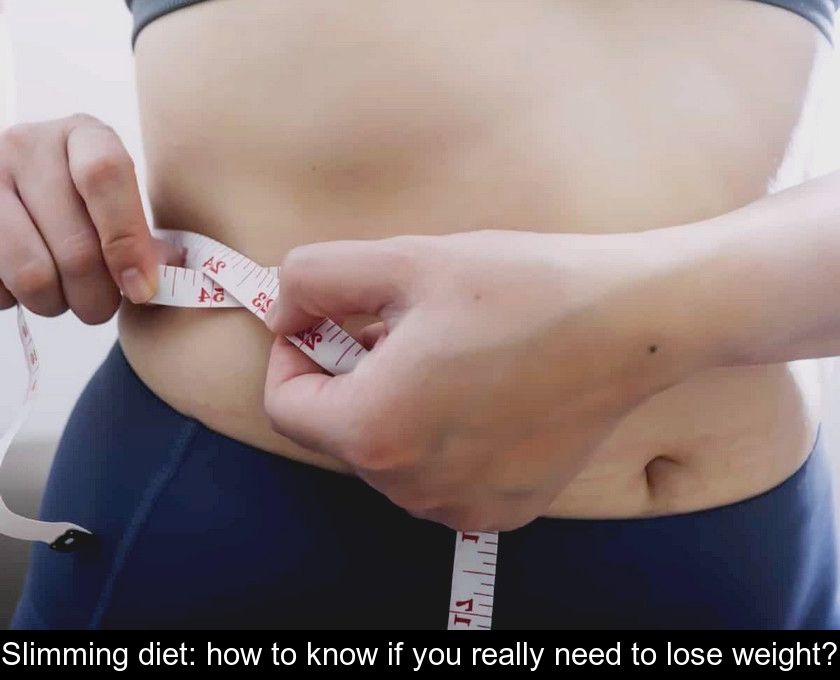Slimming Diet: How To Know If You Really Need To Lose Weight?
As spring approaches, many people are thinking about going on a diet to lose a few pounds. Perhaps you are thinking about it for aesthetic reasons. But, from a strictly medical point of view, are you sure you need to lose weight? We explain to you how to know if you really need to lose weight.
By calculating your BMI
The first tool doctors use to find out if a person really needs to lose weight is the body mass index or BMI.
This index, which is valid for both men and women , is a number that allows the assessment of one's build based on weight and height.
To calculate it, you need to divide your weight in kilos by your height in meters squared. For example, for a person who is 1.70 meters tall and weighs 60 kilograms, the calculation is as follows: 60 / 1.70 x 1.70 = 20.8
The number thus obtained allows you to know if your weight is compatible with a good health condition:
- if the result is below 18, your BMI is too low and you are too thin
- if the result is between 18.5 and 24.9, your weight is considered normal
- if the result is between 25 and 29.9, you are considered overweight
- if the result is between 30 and 34.9, you are moderately obese
- if the result is higher than 40, you are morbidly obese.
Measuring your waistline
Even if the BMI calculation is useful to know if you need to lose weight, it is not a perfect tool because it does not take into account the musculature and age of the person.
If we consider these criteria, the weight of form of an individual, that is to say the one with which he feels good and that he can maintain in a stable way without harming his health, can sometimes be higher than the ideal norm.
Another way to assess whether one needs to diet is to measure one's waistline. A tape measure is a very simple but very useful tool for assessing abdominal fat.
The fatty mass that attaches around the organs is called abdominal fat or visceral fat. It is the most dangerous to health because it promotes excess cholesterol, diabetes and increases the risk of cardiovascular disease.
To use this method, simply take a sewing tape and place it well between the last rib and the top of the hip bone. You should also take this measurement without pulling in your belly (don't cheat!).
For women, waist circumference is considered normal up to 80 cm. You are overweight if your waist circumference is between 81 and 88 cm and abdominally obese above 88 cm.
For men, waist circumference is considered normal up to 94 cm. You are overweight if your waist circumference is between 95 and 102 cm and abdominal obesity above 102 cm.
To note: excess abdominal fat is worse for your health if your belly is hard than if your belly is soft.
By doing blood tests
Both of the above methods can be used to determine if someone really needs to lose weight.
However, only blood tests prescribed by a doctor (such as your general practitioner or cardiologist) can determine if your health condition requires medical attention.
The term metabolic syndrome is used to refer to the health consequences of being overweight and in particular to cardiovascular health.
Symptoms of metabolic syndrome include excess abdominal fat but also high blood pressure, high blood sugar and triglycerides, and low levels of good HDL cholesterol.
By calculating its basic metabolism
Finally, if you want to get an idea of how many calories you need each day, you can calculate your basal metabolic rate.
Basal metabolic rate is the number of calories your body expends at rest to perform its vital functions (such as breathing, heartbeat, digestion, and maintaining body temperature at 37°C).
There are two main methods of calculating it: the Oxford method and the Harris and Benedict method. The second calculation is a little more complex because it takes into account weight and height criteria but also sex and age.
You can easily find online calculators to estimate your basal metabolic rate. Keep in mind that this calculation is not an exact science. The result obtained is rather a benchmark that can help you moderate your caloric intake and keep a healthy weight.








